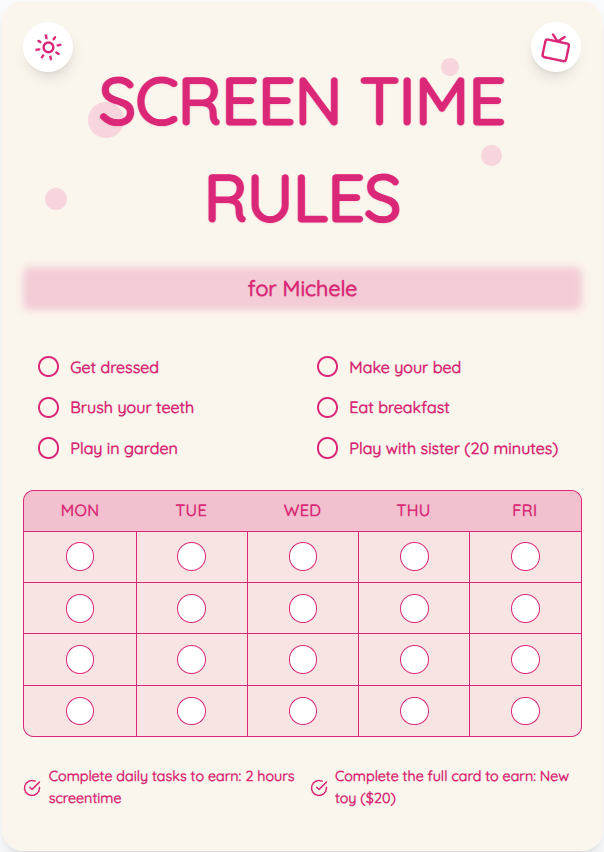The Ultimate Guide to Setting Screen Timeout Settings for Kids
As a parent, managing your child's screen time can be challenging. Screen timeout settings offer a simple yet powerful way to regulate how long your kids spend on devices. In this comprehensive guide, we will explore the importance of screen timeout settings and provide you with practical tips to help your family find a healthy screen time balance.
See What Your Screen Time Chart Will Look Like
Here's an example of a beautiful, customizable screen time rules chart you can create for your family

Understanding Screen Timeout Settings
Screen timeout settings allow you to automatically limit the amount of time a device can be used before it goes to sleep or locks. By utilizing these settings, you can enforce breaks and boundaries on your child's screen time without constant monitoring.
How to Set Screen Timeout on Different Devices
Each device has its own screen timeout setting options. For smartphones, tablets, and computers, you can typically find these settings in the 'Display' or 'Screen' section of the device's settings menu. On gaming consoles, these settings may be under 'Power' or 'Energy Saving' settings.
Put These Tips Into Action
Create a custom chart to implement these strategies with your child
Benefits of Using Screen Timeout Settings
Implementing screen timeout settings can help prevent eye strain, improve sleep quality, and encourage physical activity and social interaction. By setting limits on screen time, you are promoting your child's overall well-being and development.
Tips for Effective Screen Time Management
1. Create a screen time schedule that includes designated periods for device use and offline activities. 2. Communicate openly with your child about the importance of balanced screen time. 3. Use screen time charts as visual aids to track and reward healthy screen time habits. 4. Set a good example by practicing mindful tech use yourself.
Practical Tips for Success
- Create a family screen time agreement to establish clear rules and expectations.
- Encourage outdoor play and hobbies to reduce reliance on screens.
- Use parental control apps to supplement screen timeout settings for added control.
- Involve your child in setting screen time limits to promote responsibility.
Frequently Asked Questions
Are screen timeout settings effective for all age groups?
Yes, screen timeout settings can be customized to suit different age groups and individual needs. For younger children, shorter timeouts may be more appropriate, while older children may benefit from longer timeouts.
How do I handle resistance from my child regarding screen timeout limits?
It's normal for children to resist limits on screen time. Consistent communication, positive reinforcement, and setting clear expectations can help address resistance over time.
Can screen timeout settings impact my child's learning opportunities?
When used appropriately, screen timeout settings can enhance learning by encouraging breaks, physical activity, and diversified interests. They help create a balanced environment that supports healthy development.
By proactively managing screen time through effective use of screen timeout settings and implementing the tips provided in this guide, you can create a healthier tech environment for your family. Visit ScreenTimeRules.com to access customizable screen time charts that can further support your efforts in promoting responsible device use.
Ready to Transform Your Family's Screen Time?
Join thousands of parents who have successfully managed screen time with our customizable charts.
